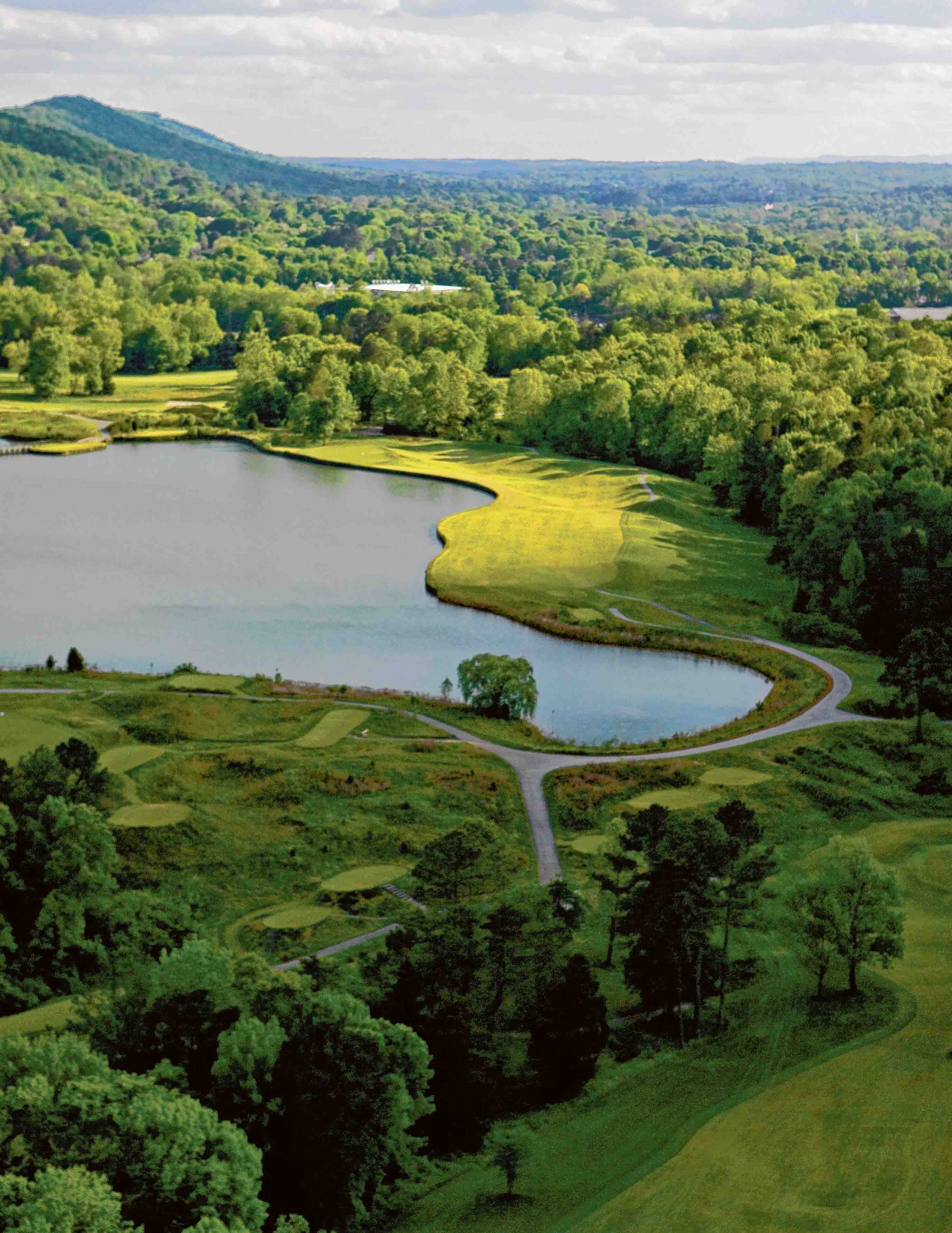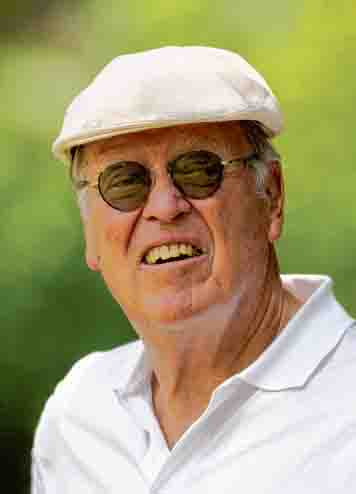David Stone steps onto The Honors Course 14th green and pulls the cover off his putter, casually dropping a ball about 35 feet from the hole. He lines up the shot and makes an impromptu putt. He sinks it and gives a crooked grin. "Happens every time," he jokes.
For a moment you're inclined to believe him. After all, the man knows his greens. As the only golf course superintendent to be inducted into the Tennessee Golf Hall of Fame, Stone was handpicked nearly 30 years ago to care for this golfer's Eden by course architect Pete Dye and founder Jack Lupton.
Riding the course with Stone is equal parts golf and wildlife tour. It quickly becomes apparent he cares as deeply for the birds that share the course as he does its Zoysia fairways - some of the first in the Southeast. Several dozen birdhouses are placed throughout the course, given equal prominence to the fans that cool the bent-grass greens, a heat-sensitive species requiring extra care in Southern summers. Mid-tour we're interrupted by a member telling Stone about his experience at another top course in the state.
"They bragged so much about their greens I couldn't wait to get there," says the member, pointing his club for emphasis. "They better not come here; they'll cry." Exchanges like this are commonplace on the course. Designed to honor amateur golf, there's a purity and enthusiasm for the sport that's palatable. Several major amateur tournaments have been hosted on The Honors, including the U.S. Amateur, the Curtis Cup, the U.S. Mid-Amateur and two NCAA Championships, including 1996 when Tiger Woods was crowned the national individual champ in his final tournament at Stanford. This month the venue will host the USGA Senior Women's Amateur - a rare opportunity for non-members to walk the course.
If The Honors Course were a painting, it would be the "Mona Lisa." In fact its entrance is almost as hidden as the identity of da Vinci's famous smiling woman, tucked away off Exit 11 in Ooltewah just as the four lane narrows to two. The only sign that you're in the right place is the perfectly manicured grass, shrouded by magnolias and mystique.
"When I go out there and drive through the gate it's like a different world," says Joel Richardson, co-founder and club president. "Everything else is left behind."
With an understated elegance and perfectly imperfect beauty, the 400-acre course nestled at the base of White Oak Mountain is ranked No. 29 in Golf Digest's top 100 courses in the country. Yet its under-the-radar sensibility keeps it out of the limelight - perhaps only adding to its intrigue. Part of the course's allure can be attributed to its well-known creator, Jack Lupton.
Brush strokes of the soda bottling magnate and philanthropist can be seen throughout the 7,000-yard course. As a long-time golfer and prominent member of Augusta National, Lupton brought the best of everything he liked about the home of The Masters to Chattanooga, including the caddie program, perfectly appointed cottages and top-notch service. And that's where the similarities end.
Much like its founder's personality, The Honors Course is bolder than most with steep bunkers, undulating greens and 3-foot-high roughs that will swallow stray balls. Deliberately placed weeds such as Queen Anne's Lace, Black-eyed Susans and mullen provide interesting hazards as well as food for the wildlife that roams the course, including deer, raccoons and even the occasional bear. "It's not a course for beginners," warns club pro Henrik Simonsen. "If they haven't played the game much, they'll get hurt."
The idea to build a first-class golf course in Chattanooga originated with two of Richardson's good friends, Bill Taff and Llewellyn Boyd, who helped found the course along with Richardson, Bill Healy and Lupton. But if Taff and Boyd planted the seed, Lupton watered it. And he didn't nourish it into the world-class course it is today with a light touch.
Richardson recalls how Lupton got the 14th hole redesigned several years after opening. Famed course designer Dye admitted it was never a "natural" golf hole, and its tee to green sand trap was proving a nightmare for caddies. Still, Dye's packed schedule prevented him from working on it.
Running into the architect in Florida, Lupton vowed to Dye that if he didn't get up there by 8 a.m. Monday, he'd redesign the hole himself. "Sure enough, first thing Monday morning Pete was walking the course figuring out what to do," Richardson laughs.
This get-it-done ethos was applied to every area of Lupton's life. Once when an afternoon thunderstorm interrupted his golf game, he chartered his plane and the foursome finished the round in South Florida. But that's not to say he flaunted his wealth-quite the opposite. "Jack didn't do things to be showy," explains Stone.
"There's no big lighted gate with fancy stonework that says 'The Honors Course' - it's hard to find. He liked things laid back and subtle." Lupton's managerial style is probably best summed up with a painting that hangs in the men's locker room titled "The Committee." It pictures 10 men in business suits around a conference table - all featuring Lupton's face. "For years later when a decision was questioned Jack would just smile and say, 'The committee said to do it,'" says Stone. Still, Lupton garnered a deep respect for everyone who worked for him. "He was very direct and he always knew what he wanted," recalls Richardson. "But at the same time he was open to outside advice."
Since opening in 1983, The Honors Course has changed very little, from its memorable fairways to its classic Tennessee farmhouse décor inside, largely influenced by Lupton's wife, Alice. It isn't old-fashioned or stuck in the past; it exudes a confidence and satisfaction with what it has become.
"This place is so unique because of its simplicity," explains Simonsen. "There are newer, more modern places that are trying to copy places like this, but they tend to overdo it. They just don't have all the ingredients."




